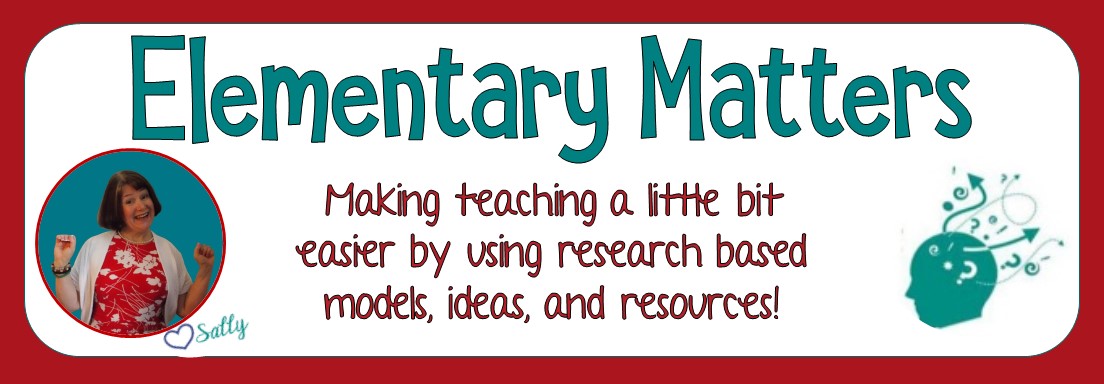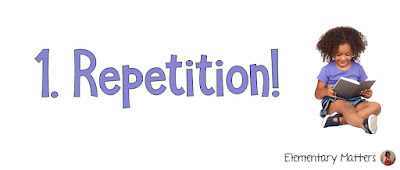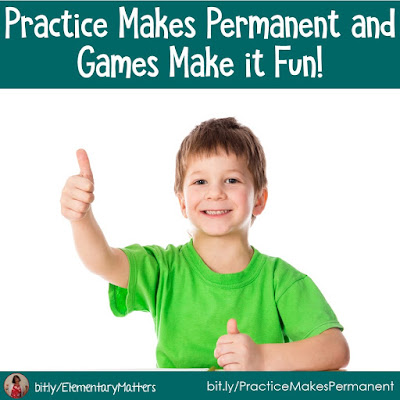The words "Drill and Kill" refer to rote learning.
They imply that rote learning will kill a student's motivation to learn.
With today's technology and all the improvements in the world, do we really still need to include rote learning in education. Don't we want to get the children thinking beyond the basic information?
Well, yes, we certainly do want them to think above the basic information! We want children to learn how to learn, and think beyond that learning! In fact, here's a little reminder of Bloom's Taxonomy:
Of course, we want our students to get to those upper levels of the triangle, but before they get there, they have to do some remembering and understanding.
The remembering part is where rote learning comes into play. These are the building blocks for our learners.
Here are some examples of things that primary students need to learn by rote:
- the alphabet
- letter sounds
- numbers
- math facts
- sight words
Here are some example of things older learners need to learn by rote:
- A football players needs to learn the plays and drills.
- A musician needs to learn the notes and chords.
- An actor needs to learn his lines and movements.
- An airplane pilot needs to learn the purpose of all those buttons.
- A grocery store manager needs to learn what products are sold and where they are located.
- A pharmacist needs to know the names of the prescriptions and dosages.
- A physical therapist needs to know the muscles of the body.
- A member of the clergy needs to know the Bible.
I'm sure you can think of plenty more!
But memorization doesn't have to be painful or miserable for the learner!
Here are some ideas that will help learning basic information be a little more valuable, as well as more fun and motivating:
Five minutes each day is much better than a half hour, once a week! Research shows a little bit each day is best!
Five minutes each day is much better than a half hour, once a week! Research shows a little bit each day is best!
Saying it out loud really helps the memory! If it's a math fact, recite the entire fact, not just the answer. Remember when we learned spelling words we were told to "Say it, spell it, say it?" They were right on track! I've often told my students to say it "out soft." It's not a real expression, but my students know it means, "loud enough to hear yourself, but not loud enough to disturb others!"
Humans need socialization. Learning information tends to "stick" better when students are talking about what they're learning! Quite often, they share tricks that help the learning!
If I want my students to remember something, I'll repeat the phrase over and over in a rhythm the children will remember. Most often, they will join in with me. The next time it comes up, I'll repeat the phrase with the same rhythm, and they'll remember it. If necessary, I'll add some movement as well. It never fails!
How many of you know all the words to The Brady Bunch theme song? Probably most of you! Now how many of you worked hard to learn those words? Probably none of you! Music is magical! If you put important information to a tune, it helps the memory! (Remember Schoolhouse Rock? it works!)
Working with information over and over until it is remembered isn't a whole lot of fun, but teachers know how to make it fun! I'm a big believer in playing games!
Did you realize there are 200 basic addition and subtraction facts to be learned? You can't just give all 200 to the kiddos at once! Give a few at a time, then when those are learned, add a few more. We want them to have success, not be overwhelmed!
Rote learning, or memorization, is an important part of learning, but please remember it is only the beginning. These are the building blocks. Once the basic information is learned, children need to grow from that knowledge and develop a deeper understanding with motivation to learn more and process that information. Rote learning only covers the bottom step of Bloom's Taxonomy. It is our job to bring the children much further!
Here are a few resources to help with some of the information that needs to be memorized:
Addition and Subtraction Facts: Fact Fluency System for Addition and Subtraction: The Bundle
Addition and Subtraction facts for distance learning:
Fact Fluency for Addition and Subtraction Boom Learning: the Bundle
Addition and Subtraction facts for distance learning:
Fact Fluency for Addition and Subtraction Boom Learning: the Bundle
Multiplication and Division Facts: Fact Fluency System for Multiplication and Division: The Bundle
Multiplication and Division facts for distance learning:
Fact Fluency for Multiplication and Division Boom Learning: the Bundle
Multiplication and Division facts for distance learning:
Fact Fluency for Multiplication and Division Boom Learning: the Bundle
Sight Words: Dolch Sight Word Phrases Bundle
or you can get the whole bundle at a huge discount:

























